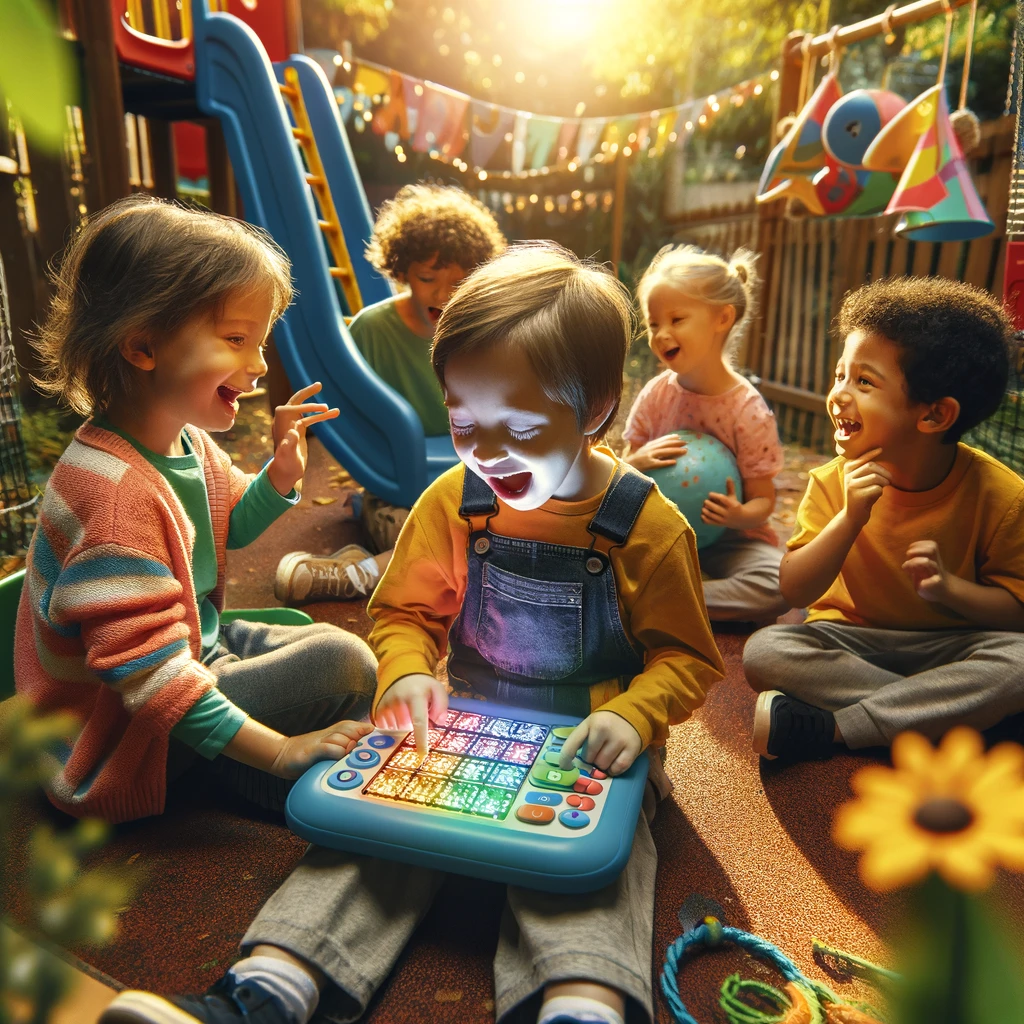
Breaking the Isolation: Encouraging Social Interaction for Non-Verbal Autistic Children
For many non-verbal autistic children, the world can sometimes feel isolating. Communication barriers often hinder their ability to interact with peers, leading to a life where solo play becomes a norm. However, at Give Kids A Voice, we believe in the power of breaking down these barriers and fostering an environment where every child can connect, share, and play alongside others. This blog post aims to shed light on strategies and tools, particularly our Augmentative and Alternative Communication (AAC) devices, that can help bridge the gap between non-verbal autistic children and their peers.
Understanding the Challenge:
Non-verbal autism doesn’t just affect communication; it can also significantly impact social interaction. Children who struggle to express themselves may find it challenging to participate in group activities or make friends, leading to feelings of loneliness and isolation.
Strategies to Encourage Social Interaction:
- Introduce AAC Devices Early: Early introduction of AAC devices provided by Give Kids A Voice can make a significant difference. These tools not only aid in communication but also serve as a bridge to more interactive play with others.
- Create Inclusive Play Dates: Organize play dates with both neurotypical children and those with autism. Ensure these play dates are structured with activities that can include all children, regardless of their verbal abilities.
- Use Visual and Social Stories: Visual aids and social stories can help prepare non-verbal autistic children for social interactions, teaching them what to expect and how to engage with their peers.
- Encourage Parallel Play: Parallel play, where children play alongside each other, can be a comfortable starting point for those who find direct interaction overwhelming. It provides the proximity needed to foster eventual interaction.
- Leverage Shared Interests: Find activities or topics that interest both your child and potential playmates. Shared interests can be a powerful motivator for interaction.
- Facilitate Non-Verbal Communication: Encourage forms of non-verbal communication, such as gestures, sign language, or using the AAC device to share thoughts and feelings. This can help non-verbal children feel more connected to their peers.
Conclusion:
While the journey towards social interaction for non-verbal autistic children may have its challenges, it’s a path filled with opportunities for connection and growth. With the right support, tools, and understanding, we can help these children emerge from the shadows of isolation into the vibrant light of community and friendship.


No Comments